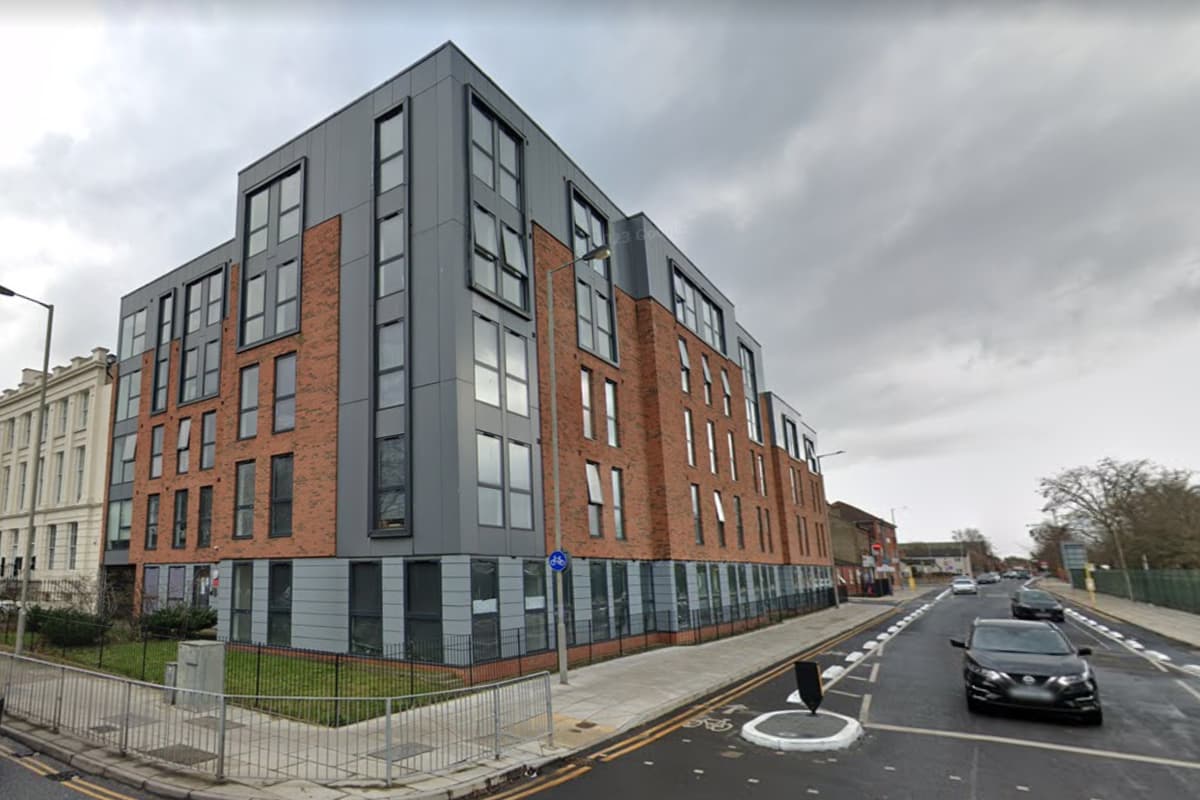10 Years of Excellence – Airways

DALLAS – On June 14, 2013, the Airbus A350 XWB flew for the first time from Toulouse-Blagnac Airport (TLS); Airbus’ Megafactory. Ten years later, the widebody gem of the European manufacturer has become one of the most successful long-haul aircraft in the world, and is still beating fuel efficiency and passenger comfort records every single day.
At the moment of writing, the Airbus A350’s three variants—A350-900, A350-1000, and A350 Freighter—have achieved 535 deliveries and 967 firm orders and are most likely to surpass the 1000 order mark next week during the Paris Air Show 2023 edition.
The second widebody product from Airbus, the A330neo reached 291 firm orders from 25 different customers in May 2023. The replacement airframe for the successful A330ceo series has seen the delivery of its 100th unit in under four years of production.
Thanks to a thorough market study, technological and engineering development, and the international cooperation of the Airbus enterprise, Europe has become one of the leading continents in terms of long-haul commercial aviation.
Airways was invited to the 10th A350 First Flight Anniversary Meeting by Airbus where we received the latest updates on orders and deliveries, technological advances, and future strategies of the Airbus widebody fleet, ranging from the smallest Airbus A330-800neo to the newest Airbus A350 Freighter.

About the 10th Anniversary Meeting
The meeting was held exactly 10 years after the first flight of the Airbus A350-900 at the Toulouse Airbus factory hangars. We had the opportunity to talk with spokespeople Stan Shparberg, Head of Marketing at Airbus Commercial Aircraft, and Florent Massou, Head of the Airbus Widebody Programme to get the latest updates and answers to our inquiries.
Stan Shparberg has been with Airbus since March 2020, joining the manufacturer as Vice President of Airbus’ Corporate Jets division, which today has a wide business aircraft product offering, ranging from the smallest Airbus ACJ “TwoTwenty” to the largest ACJ350, the quietest VIP aircraft offering up to 22 hours of non-stop flying.
Today, Shparberg holds the position of Head of Marketing at Airbus and is accountable for promoting and selling commercial aircraft designed and manufactured by Airbus. Since the first Airbus A300 series in 1974 with Air France (AF), Airbus has delivered over 11,000 aircraft.
Florent Massou has been the Senior Vice President of the Airbus A330 and A350 family programs since July 2022. In his earlier years, he played a significant role in the technical and commercial development of important Airbus aircraft, such as the A320 series until 2014 and the A380 until 2018. Before joining the widebody division in 2021, he was the SVP and Head of the Airbus A220 program.
As the Senior Vice President of the Airbus A330 and A350 family programs, Massou is responsible for all important decisions and strategic planning. His extensive experience in the aviation sector and contributions to various departments in the French government have contributed to making the Airbus widebody family one of the most successful aircraft in the history of commercial aviation.
Maiden Flight of the Airbus A350
The Airbus A350 is currently the flagship of Airbus’ long-haul aircraft lineup and was designed to have the highest level of convenience and performance within the family. It was introduced in 2004 as an improvement on the already successful A330 family, incorporating new technologies such as composite materials and engines. These continue to be the key features of the Airbus A350 today.
Initially, the A350 concept closely resembled the A330 in terms of its shape, with the fuselage, wings, and tail forms closely resembling those of its predecessor. The primary change was the materials used to construct the aircraft. However, this proposal was not well-received by the aviation industry, with airlines claiming that the upcoming Boeing 787 would outclass the new Airbus plane and make it uncompetitive.
As a result, the European factory ultimately decided to completely overhaul the product. At the 2006 Farnborough International Airshow, they introduced the brand new Airbus A350 XWB, which stands for ‘Xtra-Wide-Body’. Singapore Airlines (SQ) then placed the first order for 20 units of the type just four days later.
Initially, Airbus launched three variants of the A350: A350-800 (275 seats), A350-900 (315 seats), and A350-1000 (370 seats). The key advantage of the A350 was its increased cabin width, which offered more space for airlines to work with, allowing for additional seats or improved passenger comfort through an increased pitch.
In 2009, the production of the first Airbus A350-900 began, and the aircraft had its inaugural flight at Toulouse-Blagnac Airport (TLS) on June 14, 2013. Peter Chandler, Airbus’ chief test pilot, expressed his satisfaction with the flight, stating that “it just seemed really happy in the air” and that there were no major issues with the tests.

Main Objectives of the Airbus A350
The Airbus A350 was specifically designed to prioritize “unbeatable fuel efficiency.” To ensure this success, the fuselage and wings are made of composite materials primarily consisting of carbon fiber-reinforced polymers and aluminum, which were some of the most innovative components of the aircraft. Additionally, the new Rolls Royce Trent XWB engine has a 9.6:1 bypass ratio, which significantly reduces fuel burn.
In addition, the design team incorporated the latest technologies and aerodynamic advancements to optimize the wing design and reduce aerodynamic drag. For the first time, Airbus introduced “blended winglets” into the Airbus A350 family. This design feature was later also applied to the A330neo series.
All of these features, combined with the state-of-the-art avionics systems and revolutionary “fly-by-wire” concept, make the Airbus A350 XWB one of the most fuel-efficient airplanes available. It burns up to 25% less fuel than previous-generation aircraft.
Furthermore, the A350’s “Xtra-Wide-Body” offers airlines the opportunity to revolutionize the passenger experience by implementing innovative concepts that increase passenger capacity without sacrificing customer comfort. This has enabled airlines such as Qatar Airways (QR), with its renowned QSuite Business Class seat, and Iberia (IB), with its recent “A350 Next” cabin, to realize their visions using this aircraft.
As of May 2023, more than 50 operators have put their faith in Airbus’s flagship model, the A350. However, the A350 has faced setbacks during both the development and operational phases due to numerous quality and design issues, leading airlines worldwide to ground their airplanes and demand immediate resolutions from the manufacturer.

The Airbus-Qatar Airways A350 Battle
In January 2021, the aviation world was taken by surprise when QR accused Airbus of providing aircraft with low-quality paint on the fuselage of the Airbus A350. The hot climate of Qatar caused severe degradation and loss of paint from the body and winglets, forcing the airline to ground at least 20 entire units for years.
This led to a highly publicized and even legal battle between the two parties, as Qatar Airways sought compensation from Airbus for the unavoidable grounding of almost half of its A350 fleet. Despite this, Qatar CEO Akbar Al Baker expressed hope that the dispute could be resolved without resorting to the courts, acknowledging that every partnership experiences disagreements.
To this day, QR continues to have 10 Airbus A350-900 aircraft grounded in Doha, and since November 2021, the airline has leased up to eight Boeing 777-300ER aircraft temporarily to bridge the operational gap left by the grounded fleet.
In February 2023, Airbus and QR settled the dispute and agreed to work together on design changes to the A350 painting process and get all the grounded A350s back in the skies.
Airbus stated, “Qatar Airways and Airbus are pleased to have reached an amicable and mutually agreeable settlement in relation to their legal despite over A350 surface degradation and the grounding of A350 aircraft. The settlement agreement is not an admission of liability for either party. This agreement will enable QR and Airbus to move forward and work together as partners.”

The A350 Project Today
At the 10th anniversary meeting, Stan Shparberg said, “The A350 is shaping the future of air travel and air freight”, referring to the clear importance of the Airbus A350 in the plans of the manufacturer. Today, ten years after the first flight of the A350, the airplane is a key piece in the development of the following three big plans and strategies in the aviation industry.
Firstly, Qantas Airways (QF) has opted for the Airbus A350-1000ULR variant for its ambitious ‘Project Sunrise‘, which aims to establish non-stop flights between Sydney (SYD) and distant destinations such as London (LHR), Paris (CDG), and New York (JFK). Recently, the airline introduced special passenger cabins to enhance the comfort of these +20-hour flights.
Secondly, Airbus is re-entering the air freight market by launching the A350F, a cargo variant of the successful twin-engine jet. The European manufacturer is optimistic about the project, predicting a market share of 42% for the A350F compared to rival Boeing 777-8F, which is anticipated to cover 58% of the market share within the 777X family.
Additionally, the Airbus A350 Freighter is set to feature the widest cargo door ever to fly, with a width 17% greater than that of the 150-inch door on the Boeing 777F family. Furthermore, the maximum payload of the A350F has been increased by two tons, enabling airlines to transport up to 111 tons of cargo per flight, thus boosting the profit margins of air freight operations.
Lastly, Airbus has taken strides towards sustainability by increasing the proportion of Sustainable Fuel (SAF) used during flight tests and Beluga XL transport flights. Airbus anticipates that this action will result in a reduction of 3 million tonnes of CO2 emissions by 2033. Additionally, the manufacturer expects to achieve 100% SAF certification within the next few years.

The Airbus A350 in Numbers
Since the launch of the program in 2004, the Airbus A350 XWB has completed an outstanding order book of 967 units of all its variants from 54 total customers. Of those aircraft, more than half, 535 in total, have been delivered to 40 operators. This means that the backlog of the A350 includes 393 passenger variants and 39 freighters to be produced.
The largest operator of the Airbus A350 is SQ with 62 units as of May 2023. It is closely followed by QR, which flies 55 and is also the largest operator of the longer A350-1000 variant, with 21 units in total. For the Airbus A350F version, both Singapore Airlines and Etihad Airways (EY) are the largest customers at the moment, with seven aircraft each.
In terms of passenger capacity, the airline that has configured its aircraft with the densest capacity is the European low-cost leisure carrier French Bee (BF), which operates an all-A350 fleet, of which two A350-1000s feature a cabin fit for 480 passengers in a two-class layout, which is the maximum allowed by the manufacturer.
Regarding route networks, it is known that Qantas plans to operate non-stop flights from Sydney to London under “Project Sunrise” using the A350-1000ULR. Currently, however, the longest route served by an Airbus A350 is Singapore Airlines flight SQ22, which covers a distance of 9,537 miles between Singapore-Changi Airport (SIN) and New York-John F. Kennedy Airport (JFK).
Conversely, the world’s shortest Airbus A350 flight is less than 20 minutes long and connects the African cities of Douala (DLA), in Cameroon, and Malabo (SSG), in Equatorial Guinea. This brief flight, Ethiopian Airlines (ET) Airbus A350-900 flight ET913, which operates four times a week, spans a mere 72 miles and is 132 times shorter than flight SQ22.

The Future of the Airbus Flagship
Regarding route networks, it is known that Qantas plans to operate non-stop flights from Sydney to London under “Project Sunrise” using the A350-1000ULR. Currently, however, the longest route served by an Airbus A350 is Singapore Airlines flight SQ22, which covers a distance of 9,537 miles between Singapore-Changi Airport (SIN) and New York-John F. Kennedy Airport (JFK).
Conversely, the world’s shortest Airbus A350 flight is less than 20 minutes long and connects the African cities of Douala (DLA), in Cameroon, and Malabo (SSG), in Equatorial Guinea. This brief flight, Ethiopian Airlines (ET) Airbus A350-900 flight ET913, which operates four times a week, spans a mere 72 miles and is 132 times shorter than flight SQ22.
Airbus is currently developing its Airbus A350 NPS program for both passenger variants, with expected production to start in the coming months. It is likely that the factory will announce the introduction dates and launch customers of the NPS project during the upcoming 2023 Paris Air Show.
In addition, Airbus is focusing on the new “Fello’fly” project, which involves creating a new Airbus A350 demonstrator aircraft. The goal is to improve air travel performance by utilizing wake turbulence from other planes to provide lift to following airframes, similar to the way flocks of birds have flown in nature for centuries.
This innovative flying concept could lead to a 5% reduction in fuel consumption and, in the future, could be implemented on aircraft traveling close together for long trips, such as transatlantic flights. The project will require new onboard technologies and ground equipment and is not set to launch until 2026.

The Airbus A330neo
Although the A350 family has always been the focus of attention for the industry and customers due to its innovative technology, Airbus has also developed a secondary product that is intended to replace the A330-200 and 300 variants. This product, known as the A330-800neo and 900neo aircraft, was launched by the manufacturer in July 2014.
The objective of the A330neo family was to offer customers new aircraft with the same performance as the massively successful A330ceo series, but with better fuel efficiency. To achieve this, the A330neo family was launched with new Rolls Royce Trent 7000 engines, which have a double bypass ratio compared to their predecessor.
In addition to the new engines, the A330neo also incorporates optimized pylons and winglets similar to those on the A350 airplane, which improve aerodynamics by 4%. Despite this, up to 95% of the fuselage, avionics, and wing structure remains similar to the former A330ceo, which may not have fully convinced some customers looking for a new aircraft.
The birth of the A330neo was heavily influenced by the failure of the smallest member of the A350 family – the A350-800, which had a very similar capacity and range. However, it only received 182 orders and was eventually replaced by the larger A350-900. In 2014, Airbus decided to discontinue the shorter version and instead offered the A330neo as a replacement for aging widebody fleets.
Despite being launched almost 10 years ago, the Airbus A330neo has only received a total of 289 orders from 130 customers, of which 102 have already been delivered. The fact that there are a large number of operators compared to the order list indicates that the A330neo is not being considered as a replacement aircraft. Instead, it is seen as a stand-alone widebody solution for airlines looking to operate a small long-haul fleet.

The Airbus A330neo in Numbers
The largest operator of the Airbus A330neo is Delta Air Lines (DL), with a total of 22 units, all of the A330-900 variant. Unlike other airlines, DL has understood the initial concept of the project and may use it as a replacement for its aging A330-200/300 fleet, which has an average age of 16 years. The airline is still waiting for 14 more units to be delivered in the coming years.
TAP Air Portugal (TP) is the second largest operator of the A330neo, with 19 aircraft. They were also the launch customer of the A330-900 airframe back in November 2018. The re-engined version plays a large role in the transatlantic network of the carrier and has replaced the aging A340-300s, allowing TAP to offer some of the most competitive prices in the market.
Kuwait Airways (KU) has the largest fleet of the A330-800, with four units delivered. These aircraft fly long-haul routes along with their predecessor, the A330-200, to destinations in Asia, Europe, and North America. KU operates the longest A330-800 route in the world, from Kuwait City (KWI) to New York-JFK (JFK), which covers 6,352 miles in around 12 and a half hours of flight time.
Differing from its larger sister, the shorter A330-800 variant, which can only carry between 220 and 260 passengers in a typical configuration, is struggling to find new customers as it has currently only delivered seven airframes to just three operators. It has only received 12 orders in 10 years.
About the clear lack of orders for the short version of the A330neo, Stan Shparberg said, “We definitely see the compelling future for our A330-800. The reason we haven’t seen as many orders for that platform is that the replacement wave for the A330-200 has not begun quite yet, but we are seeing that is going to come very soon and it has been delayed somehow by the COVID-19 crisis.”

Is the A330neo Program Doomed?
It’s evident that the Airbus A330neo program has not performed well in the market, even after having a decade to establish its position. Part of the reason for this, as stated by Mr. Shparberg, is that the A330neo is too advanced for its time. Though designed to replace the previous generation in the family, airlines are not investing in the project if they don’t currently need to replace their current fleets.
Airbus had always acknowledged that the Airbus A330neo product would not sell as well as the A350 XWB, and they expected fewer orders. However, as of now, less than 20% of the airlines that operate the A330-200 and 300 variants have chosen to purchase the A330neo family as a replacement. Thus, it’s clear that the program is not fulfilling its initial objectives. In contrast, 30 airlines that once operated the A330 now trust the A350.
Does this indicate that the Airbus A330neo program has failed? Recently, Airbus confirmed that none of the variants of the A330neo will be present at the 2023 Paris Air Show display. As a result, the manufacturer won’t have a direct-selling product to entice more customers into purchasing the airplane. Instead, Airbus is focusing on promoting and advertising the A350-1000 and A321XLR, among others.
In reality, only time will tell. For at least the next five years, the life cycle of the current Airbus A330 planes currently in service won’t be a priority for operators. Consequently, there is no clear demand for an aircraft replacement at the moment.
Furthermore, airlines have demonstrated a greater inclination to invest in a brand-new airplane like the A350 instead of buying an aircraft that’s up to 95% identical to its predecessor. This trend was apparent in 2004 with the first A350 aircraft concepts as well.
Featured image: Airbus











